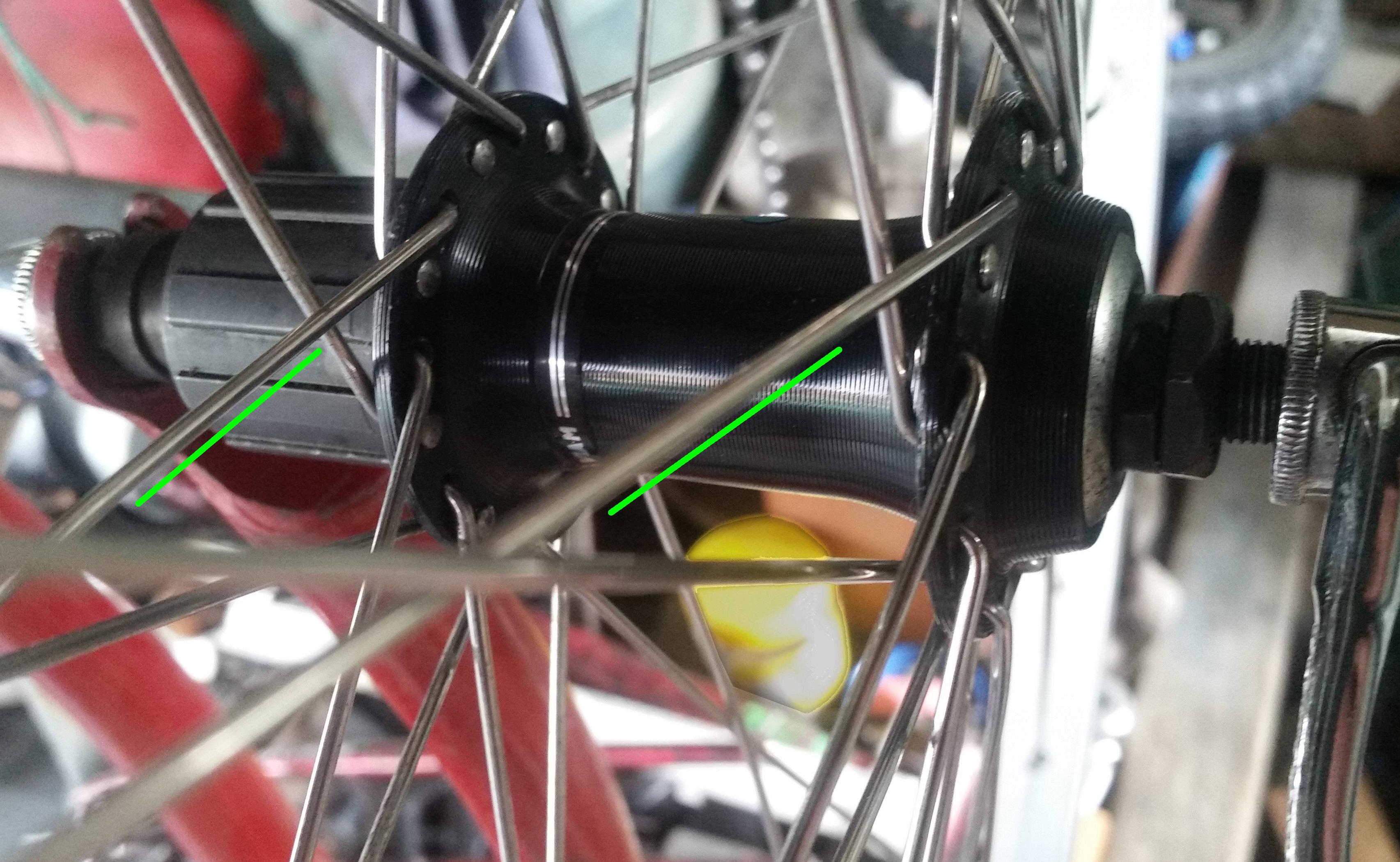This lacing pattern is actually explicitly recommended by Shimano and Magura for rear disc hubs.
Under braking, the leading spokes will be in tension, while under drive the trailing spokes will be in tension. The tension acts to straighten out the spokes, pushing the spokes on the other side of the flange outward from the flange centre line. I don't know if anyone has measured this effect, but I imagine it's negligible for most purposes.
Nonetheless, according to Roger Musson, old-fashioned disc brake designs used to have very tight clearances between the caliper and the NDS spokes, so you would want the leading NDS spokes to be on the outside at the final cross to avoid contact with the caliper under braking. This is irrelevant to your wheel because it doesn't have disc brakes.
Conversely, there's an argument that the DS spokes should be laced the opposite way around to avoid contact with the mech cage under drive load when on the biggest sprocket. This seems even more tenuous to me, given how small drive forces are in comparison with braking forces. Either way, it's consistent with what's observed on your wheel.
I'm not sure how much merit any of these arguments have – would be nice to know if someone's measured it. But in any case, asymmetric lacing patterns have some favour among the big names in the industry, at least for disc brake set-ups.

